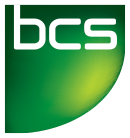SPA Conference session: Agile and Willpower: how to boost your team productivity | |||
| One-line description: | Linking neuroscience with process and people productivity with Agile process examples. | ||
| Session format: | workshop 75 minutes (90 bette [read about the different session types] | ||
| Abstract: | There is an evidence that Agile improves the developer�s productivity in terms of speed of development, code quality, and accuracy of design. Yes, it works. But why does it work? Productivity depends on the amount of the willpower energy, the force that allows to start the action and to concentrate. The willpower is not endless, it can be saved, it can be trained, there are approaches how to keep the willpower level high. To keep the willpower (and thus, productivity) on the high level, people should know and use different approaches that are found by social and brain scientists. We are going to discuss the relationship between the willpower related brain metabolism on very low level (specific amino acid cycle) and the Agile practices. You can make Agile productive, you can have non-productive Agile. Overall there are 10 productivity tips that can be put into 3 flows. As the outcome of this session participants will review their process: does the way they have it improve the productivity or they are losing all the power? The changes are cheap, the outcome can be huge. | ||
| Audience background: | I will assume general familiarity with Agile methods like Scrum, Kanban and practices that these methods consist of. But even Agile is new to the perticipants they can still get understanding about that makes process effective and link to their work (if people are not using Agile they might get lower result and want to try Agile methods). | ||
| Benefits of participating: | As the result of this talk people will: Discuss and create the flows in Scrum that work towards productivity Create the list of immediate improvements to existing SCRUM process Analyze do they use their brain in the productive way or not Participants will have new type of arguments when they are proposing changes This workshop is a discussion about how to make brain working better, whatthe drawbacks are and how the change can be done by everybody. I got very positive feedback on this topic from all conferences I presented and inside my company where this approach was used in everyday work. | ||
| Materials provided: | Prezi Presentation, note cards for exercises, point-calculation cards, Poster for exercise results publishing. | ||
| Process: | There will be 2 types of exersises 1st type - people will link information about how to save willpower and improve productivity to their everyday work and search for examples, expect to have 3 types of flows and not less than 3 examples of each. After that we`ll discuss output and I will give comments and more examples if necessary. (overall 3 identical exercises with different input and output) Type 2 - final points calculation - there are overall 10 points that people can get for productivity-raising process. We will calculate points and I will ask to create a poster with people ranging 1-4 5-7 and 8-10 so we can see and share how productive the current process is. | ||
| Detailed timetable: | Presentation type - workshop Introduction: 5 minutes; I am going to describe my background so the audience understands how I came to this topic and can build the trust. Also here I will convince people why they may want to look at their productivity and what is expected from the Agile teams. I will list the types of knowledge involved and warn the people that this will be quite an intense brain exercise with a lot of new information and call for action. The neuroscience piece: 10 minutes; I plan to go deeper to describe the biological foundation for the brain productivity and what happens with the brain if there are not enough proper amino acids. Productivity piece: 10 minutes; What actions lead to the great brain cognitive abilities? SCRUM and brain (workshop part) : 40 minutes: with the participants we'll put together the information, so they can suggest how 3 productivity flows that that make the brain work more effectively are presented in Scrum. After discussion (7 minutes per flow and collection of team's results) for top 3-5 SCRUM suggestions I will additionally describe how you can perform it so it boosts the performance and what actions lead you to normally weak productivity. Call for action: Exersise 15 minutes: Each description will have a call for action: so everyone can check, do they make SCRUM in Productivity way or in ordinary way. In exersize everyone will have the table with 10 flows so can select the alredy used ones and see the "productivity score". Wrap Up: 5 minutes: Questions and answers. | ||
| Outputs: | Poster with results of exersise 2: Final points calculation - there are overall 10 points that people can get for productivity-raising process. We will calculate points and I will ask to create a poster with people ranging 1-4 5-7 and 8-10 so we can see and share how productive the current process is. | ||
| History: | This talk was presented first in 2011 and got the expanded attention and great feedback from 2013. The topic it timeless (link of neuroscience and process effectiveness) and will not be outdated just because it was created few years ago. It was presented at: ALE (Agile Lean Europe)2013, Bucharest http://ale2013.alenetwork.eu/ale2013-program-details/#obukhova Scrum Gathering Paris 2013 http://www.scrumalliance.org/courses-events/events/global-gatherings/2013/paris-2013(See Monday Sep 23, 11.00 session). CRAFT - Budapest 2014 | ||
| Presenters | |||
| 1. Anna Obukhova Luxoft |
2. | 3. | |
